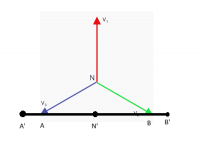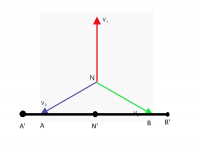LarryFine
Master Electrician Electric Contractor Richmond VA
- Location
- Henrico County, VA
- Occupation
- Electrical Contractor
Some time ago, I suggested that, if you select a unit so the secondaries will be connected in series, they could be wired to opposite ends of the primary, maintaining equal voltages to the neutral.
For example, looking at the boost diagram below, separate the secondaries and wire X3-X4 to the H4 end, and X1-X2 to the H1 end.

In other words, wire it like you would an open-delta setup, but with only one transformer, and no neutral connection to the transformer.
It would basically look like this diagram, but with one winding in each place where this diagram shows two (and there would be no "neutral" or B phase connection to the unit):

For example, looking at the boost diagram below, separate the secondaries and wire X3-X4 to the H4 end, and X1-X2 to the H1 end.
In other words, wire it like you would an open-delta setup, but with only one transformer, and no neutral connection to the transformer.
It would basically look like this diagram, but with one winding in each place where this diagram shows two (and there would be no "neutral" or B phase connection to the unit):



